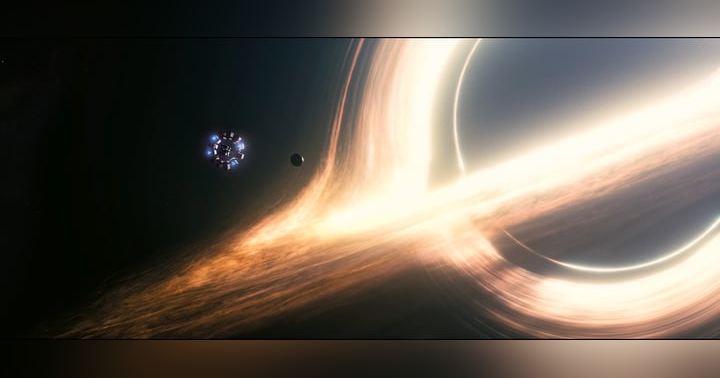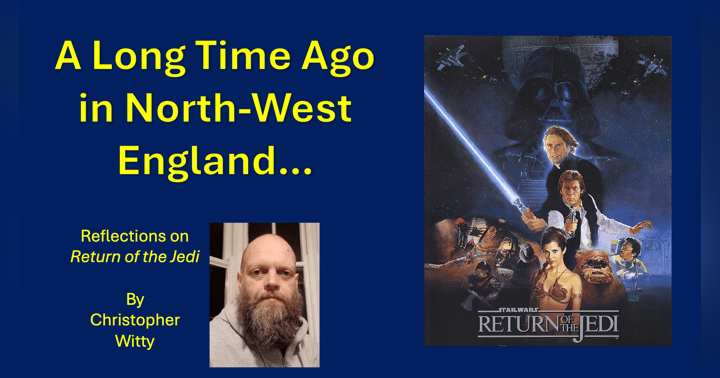Capitalism vs. Chaos: Jurassic Park by Guest Essayist Claire White

When it comes to film nemeses, some obvious contenders come to mind. Batman and the Joker. John McClane and Hans Gruber. Sarah Connor and the T-800 (although to be fair, they do team up in Terminator 2). But there’s one unsuspecting pairing I’ve only just begun to recognize even more so in my adult years — Ian Malcolm and John Hammond in Jurassic Park (1993).
I know what you’re thinking. “John Hammond isn’t the bad guy!” And true, he’s not A bad guy. After all, Nedry is the one to put a wrench in the whole thing. On first glance, you probably don’t even suspect Hammond of villainy or something nefarious. I certainly didn’t. I mean he is Kris Kringle in Miracle on 34th Street. But dig a little deeper and it’s hard not to connect him to the egotistical, capitalist tycoons we’ve all come to recognize in real life (cough Elon Musk cough).
Just look at his actions in the first half hour of the movie: he disrupts Grant’s and Ellie’s dig site with a helicopter, he bribes them into visiting his “biological preserve,” and he invites his grandchildren to a safety inspection. And that’s not nearly as terrible as how his character behaves in the book (yes, this movie is based on a novel by Michael Crichton). In the book version, Hammond is the epitome of a dark Walt Disney. He never accepts responsibility for the park failing, cares more about the dinosaurs dying than everyone else, and is just a horrible person all around. Knowing this, it’s hard not to see things from Nedry’s point of view, though it doesn’t justify his actions. If you can “spare no expense,” can’t you afford to pay your employees?
Then, we have Malcolm, the smug, nihilistic, Debbie Downer chaotician who is among the first to question the viability of Hammond’s prehistoric utopia. In real life, Malcolm would be that guy at the cookout complaining how the plastic cups you bought are killing our environment. You know deep down he’s not wrong, but can’t we just enjoy ourselves?? And that’s the purpose of his character. He is the reality of what Hammond refuses to see. He’s the movie’s moral code.
Hammond can’t be bothered to consider his park is already doomed from the beginning, even when Malcolm makes it painfully clear. Creating all the dinosaurs to be female and filling the DNA gaps with a frog is the epitome of man’s attempt to control nature and the inherent foil in doing so. Everyone knows Malcolm’s most famous line — “Life, uh, finds a way.” And while it’s a great line, I personally prefer a quote he drops after Hammond brags about what his scientists were able to accomplish. “Yeah, yeah, but your scientists were so preoccupied with whether or not they could, they didn't stop to think if they should." Hammond’s ignorance is brought to the forefront and the glass illusion is shattered. Because let’s face it, problems existed in the park long before Malcolm arrived: a worker’s death, sick dinosaurs, velociraptors conspiring. It’s a recipe for disaster or chaos, as Malcolm is well-versed in.
The idea of chaos theory goes well beyond watching a drop of water trickle down Ellie’s hand. It’s a way to describe any complex, unpredictable system — the stock market, a heartbeat, and Jurassic Park itself. Seemingly simple systems (like the park) can produce complex behaviors. Eventually, it gets so unpredictable that the whole system collapses in on itself. And we see that chaos play out in the movie, from the inefficient technology to a tropical storm, all culminating in Nedry’s ultimate sabotage. So by the end of the movie, it’s apparent this catastrophe was going to happen from the very beginning.
In the battle of Hammond vs. Malcolm, it doesn’t come down to a winner and a loser, but who is right vs. who is wrong, and I think the answer is pretty obvious. If none of that convinces you that these two are nemeses, just look at how they each dress — Hammond in all white, Malcolm in all black. If that’s not enough blatant symbolism, I don’t know what is.
- Claire White
September 7, 2022






